If you’re in search of an autumn adventure that’s off the beaten path, you’re in the right place. Imagine winding roads flanked by golden trees, mountain backdrops that take your breath away, and local culture that’s as vibrant as the fall colors. Sounds magical, right? Well, welcome to Western Sichuan!
In this blog post, we’re going to take you on a self-driving journey through this stunning region, which is a hidden gem when it comes to experiencing autumn in all its glory. From late September to late October, Western Sichuan turns into a world-class scenic corridor, showcasing its unique geographical features and awe-inspiring autumn colors.
Ready to hit the road and explore? Buckle up; you’re in for a ride you’ll never forget!
Jiajin Mountain Section
This section of the road offers beautiful scenery. Along the way, you can admire the magnificent Jiajin Mountain and surrounding snowy peaks, as well as valleys, waterfalls, and forest landscapes, experiencing the driving challenges brought by winding mountain roads.
First Stop: Chengdu
You may have been to Chengdu before, or you may have never really looked at Chengdu.
As a central city in southwestern China, Chengdu boasts tourism resources and cultural heritage that many domestic cities cannot match.
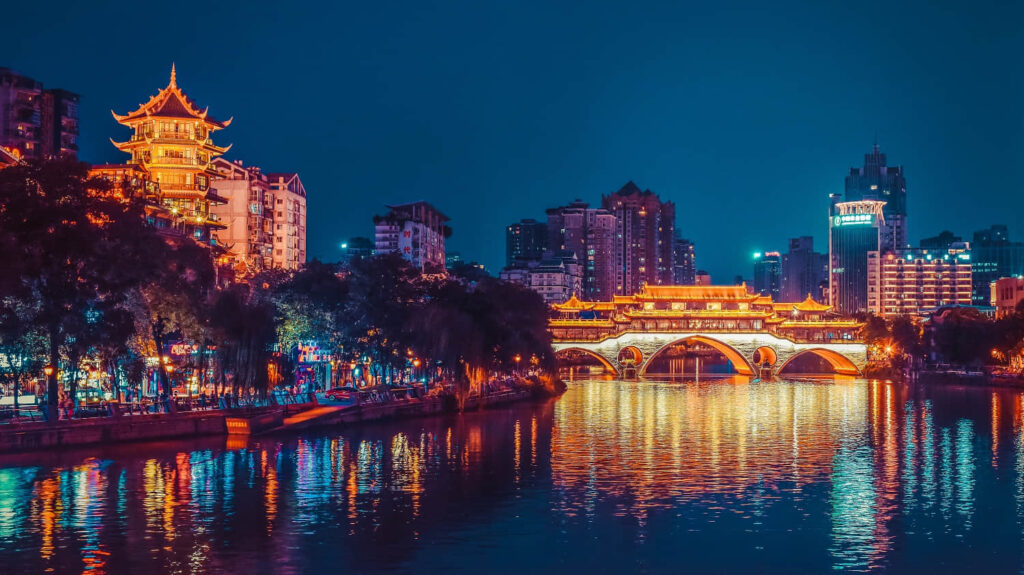
Millions of tourists come and go here every year. From the Panda Base to Wuhou Temple, from Du Fu Thatched Cottage to Kuanzhai Alley, from coffee shops to bars, there are tourists everywhere, and countless people are amazed by this city.
In addition to famous attractions, Chengdu also has many fresh and interesting things that pleasantly surprise people.
Tea houses, hot pot restaurants… Countless charming things are scattered in every corner of Chengdu, calmly waiting for the arrival of travelers.
Travel Tips: If you want to bring some souvenirs, you can basically buy all kinds of specialties from Chengdu in commercial streets like Jinli and Kuanzhai Alley, such as beef jerky, sausages, Pixian bean paste, brocade, paper-cutting, etc. The prices may be somewhat high, but they are convenient to purchase.
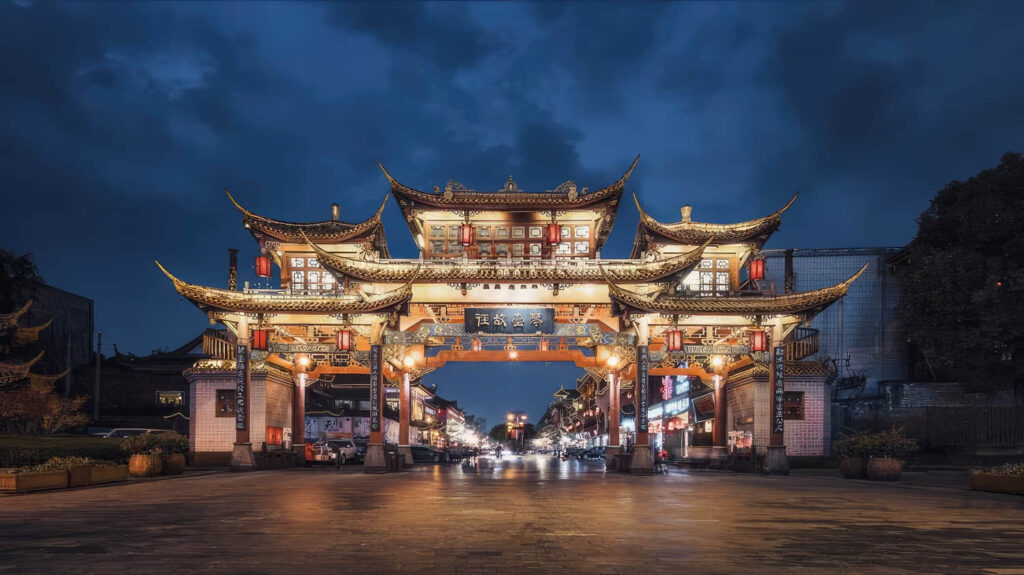
Tea houses, pear gardens, hot pot restaurants, fly restaurants, etc. in Chengdu are basically places that every traveler can choose to visit when they first arrive in Chengdu. Dragon Gate formation, face-changing performances, tasting delicious food will make you feel the comfort of Sichuan and Shu.
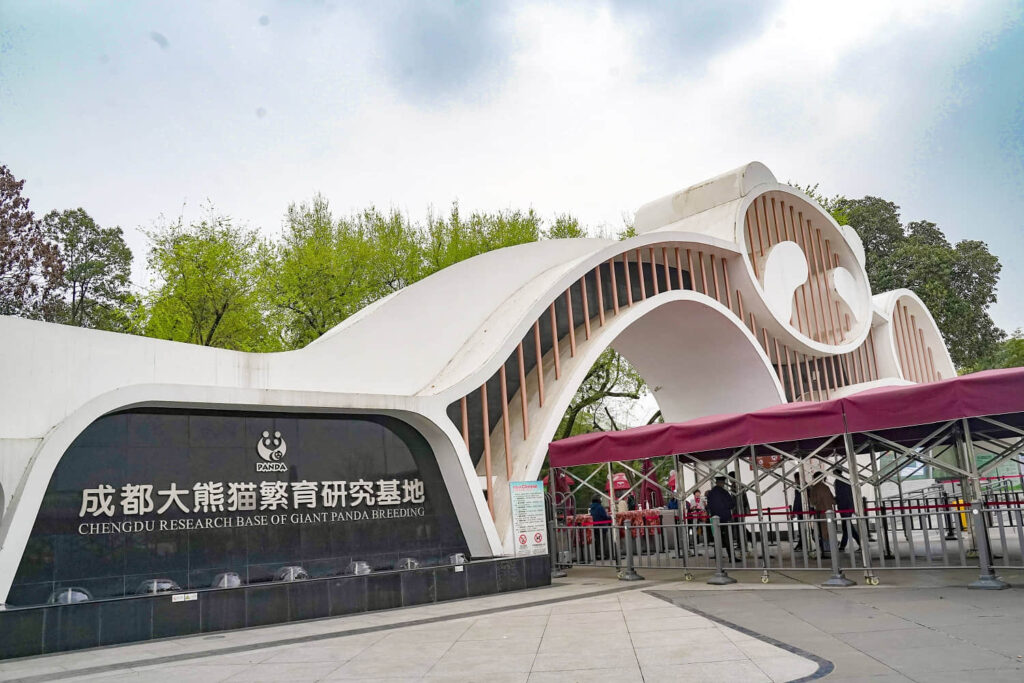
Self-driving Tips: The distance from Chengdu to Danba County is about 345 kilometers, and the driving time is about 6 hours and 50 minutes; starting from Chengdu, take G213 past Yingxiu then switch to G350, and follow this Panda Avenue past Gengda, Wolong, Dawei, Xiaojin to Danba.
Second Stop: Danba
China’s most beautiful village.
Setting out from Chengdu, when you pass Dujiangyan and turn into the vast mountains, it signifies you’re entering one of China’s most famous roads — the China Panda Avenue.
On the map, this road starts from Yingxiu Town, passing through Wolong, Siguniang, Xiaojin, Danba, Bamei, Daofu, and finally ending at Luhuo, as part of G350.
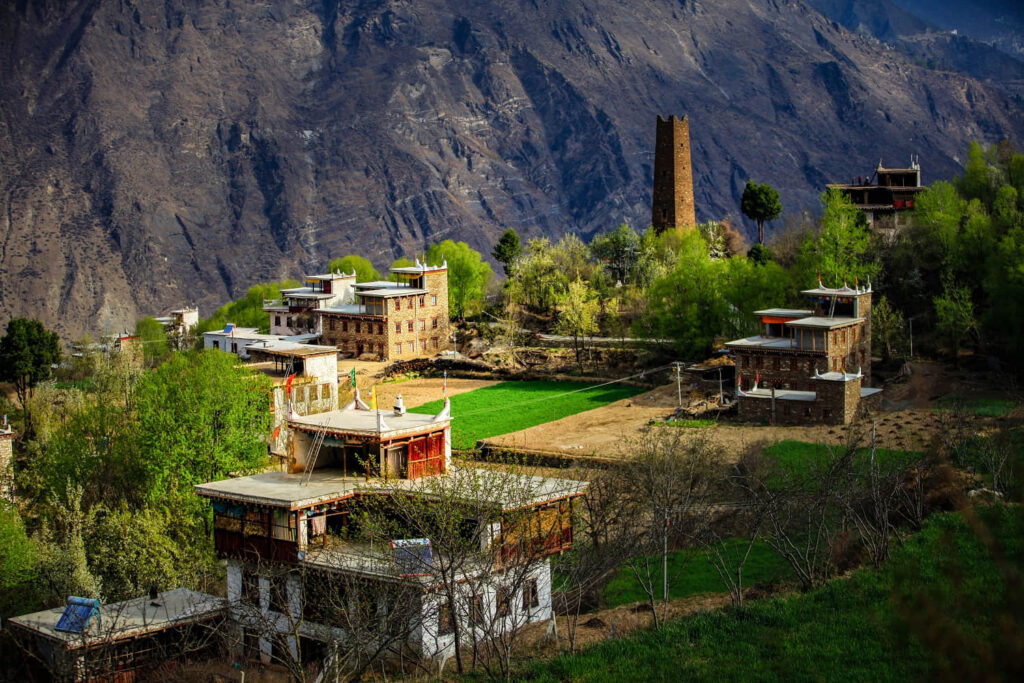
Some say, this is a road with the highest density of landscapes in the country: snow-capped mountains, grasslands, lakes, and other sceneries are concentrated within these few hundred kilometers.
Passing Yingxiu and arriving at Wolong, the home of the giant panda, is the main habitat of wild pandas. Seventy percent of the country’s pandas live here.
In recent years, with the rising popularity of pandas, this place has gone from just a stop on a tourist route to a destination where travelers come specifically to find things related to pandas.
Mount Siguniang, consists of four adjacent snow peaks in the Qionglai Mountain Range of the Hengduan Mountains, lined up from north to south.
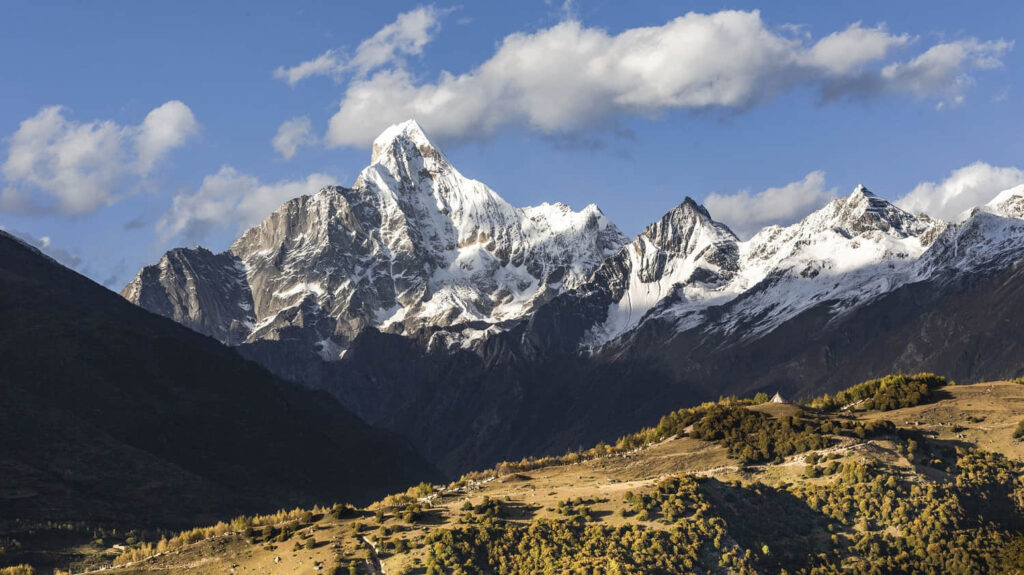
In local legends, they are the incarnations of four pure and beautiful girls, hence the name Mount Siguniang (Four Girls Mountain).
In terms of altitude, Yao Mei is the highest at 6250 meters, followed by San Jie (5664 meters), Er Jie (5454 meters), and Da Jie (5355 meters).
Although the Mount Siguniang area is large, the main attractions are “three valleys and one mountain”, namely Shuangqiao Valley, Haizi Valley, Changping Valley, and Mount Siguniang.
Xiaojin and Danba are two areas where the Jiarong Tibetans gather. They are also at the junction of Aba and Ganzi. Various Tibetan villages are scattered along both sides of the road, with Danba Tibetan village being the most famous among them.
Some say that only when you step into Danba and immerse yourself in it can you truly appreciate its beauty. Others say that the beauty of Danba is rich and beyond imagination, like a feast rushing into your eyes that dazzles you.
Jiaju Tibetan Village, along with Zhonglu, Suopo, and Beauty Valley together form the four must-visit villages in Danba. “China National Geographic” rated it as one of China’s most beautiful villages and also commented: If Denmark is the fairy tale of Northern Europe, Jiaju Tibetan Village is China’s fairy tale.
Danba is a suitable place to rest. Even if the supplies are not as convenient as Chengdu, I believe that the natural and cultural landscape and star-filled sky will let you spend a pleasant evening.
Driving tips: Danba County is about 147 kilometers from Xinduqiao Town and takes about 3 hours to drive. Take G248 and then switch to G318 to reach Xinduqiao Town. Along the way, you will pass through Yala Snow Mountain Viewpoint, Moxi Park, Tagong Grassland, and other attractions.
Panda Avenue Section
This is a characteristic road that combines tourism, nature conservation, and cultural education. It offers travelers a chance to get close to giant pandas and other wildlife. Even if you are unlucky and do not encounter these mountain elves, there is a beautiful natural scenery to slowly appreciate.
Third stop: Xindu Bridge
Photographer’s paradise.
The segment from Danba to Xindu Bridge via Bamei, from Qionglai Mountain to Daxue Mountain, and deeper into western Sichuan, the terrain and landform will also change.
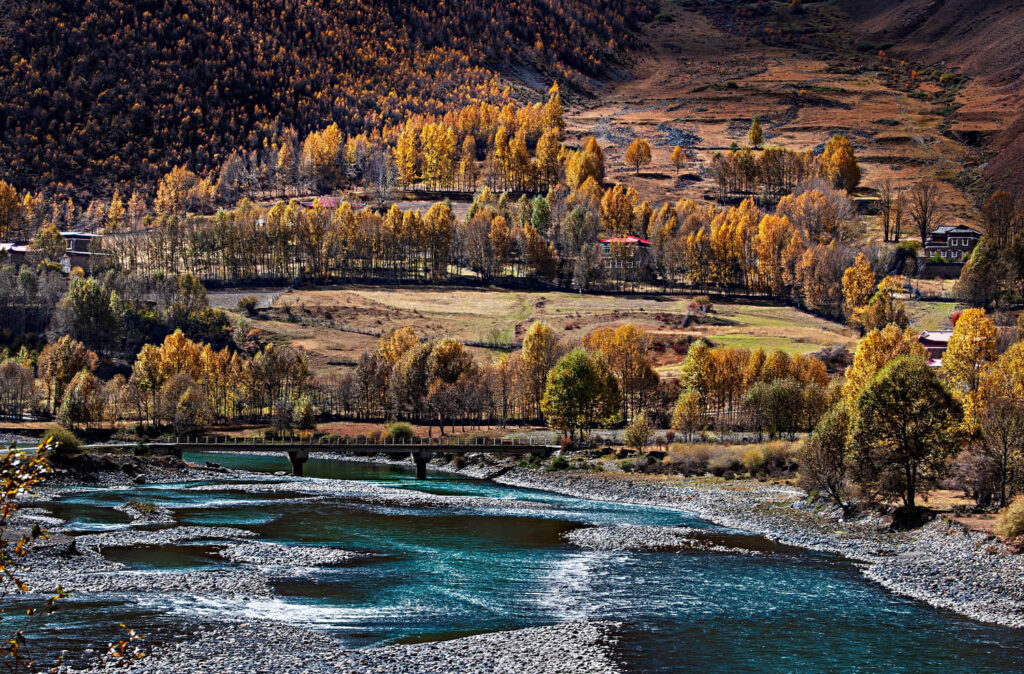
Among them, the most unmissable are Yala Snow Mountain Observation Deck for admiring the beauty of Yala (Ya) Snow Mountain, Moshipark, one of the corners of Bamei tourism, and the most surprising Tagong Prairie in Ganzi Prefecture.
Yala Snow Mountain is a high mountain covered with snow all year round, with its main peak at an altitude of 5820 meters. Even in the pure winter, it is as eye-catching as plum blossoms.
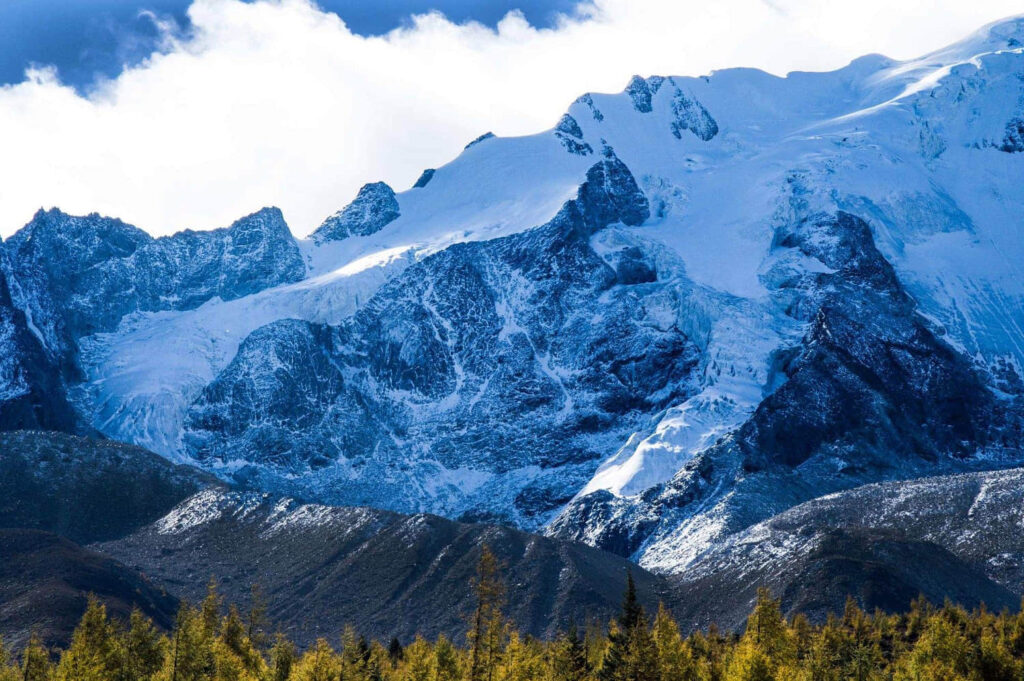
In midsummer and early autumn, looking from Tagong Prairie or Panda Avenue Yala Snow Mountain Observation Deck, it feels like a fairyland has fallen into the mortal world.
For photographers, this road can be said to be constantly producing works, prairies, snow mountains, stone forests, no matter from which angle, they can perfectly freeze the scenery of western Sichuan.
The Moshi Park in Bamei, initially called Bamei Stone Forest, is a place with a relatively unique geological landscape. The strata here were formed due to geological uplift and compression, forming a type of stratum named mylonite.
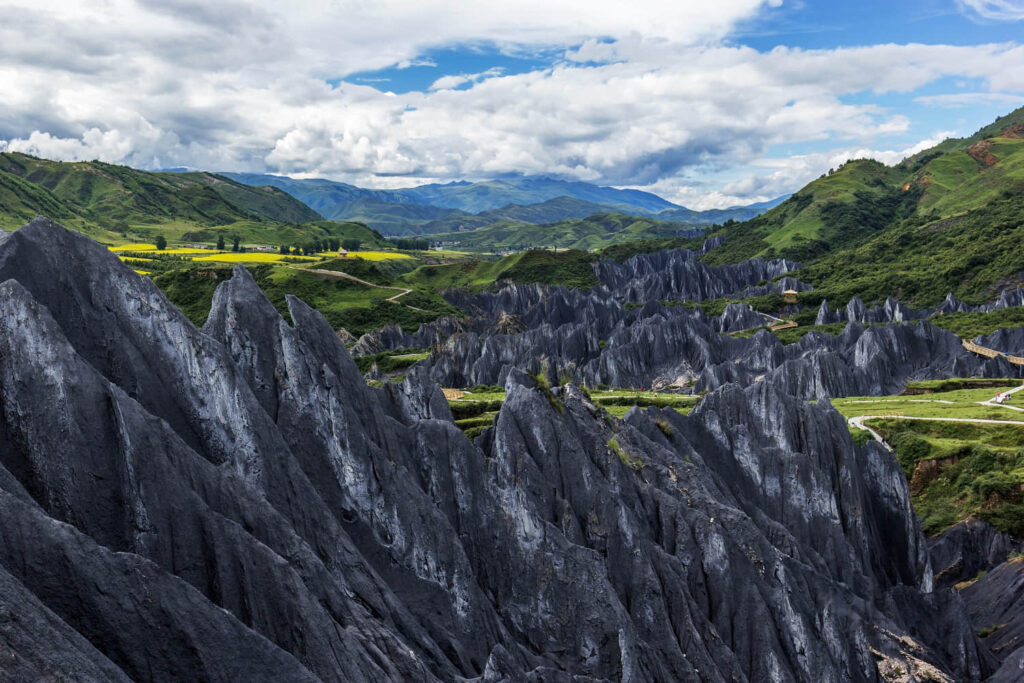
This type of rock with a relatively high calcium content has gradually turned into a sharp shape through millions of years of weathering and erosion. Looking from afar, it looks like clusters of trees, quite shocking.
If you arrive in the small town when it has just rained, this is not a sign of bad luck but the most beautiful gift from God.
Because Moshi Park only shows its most beautiful state when it is rained on. After all, mylonite is a type of rock that turns dark when rained on.
Above the Tagong Prairie, there is both the Tagong Temple with a Han temple style and the Tagong Buddhist College of the Sakya Sect. However, the most famous is the Muya Gold Stupa.
It is rumored that more than 100 kilograms of gold were used when constructing this stupa. But what makes it most stunning is when it is framed with boundless prairies or solitary snow peaks.
When the weather is good, Muya Gold Stupa, Tagong Prairie, and Yala Snow Mountain echo each other, adding an out-of-world touch when bathed in sunlight.
Xindu Bridge is known as “Photographer’s Paradise” because you can get great shots just by snapping casually. However, with development, it has been dubbed “Xindu Bridge Construction Site” due to construction sites everywhere.
This is one of the best places to appreciate Gongga Snow Mountain, with a corresponding Gongga Viewing Platform.
In addition, Xindu Bridge is also a rest point on the G318 Tibet line. With “World’s High City” Litang in front and dangerous Zeduo Mountain behind, it, with an altitude of over 3000 meters, has become a good place to avoid altitude sickness.
Self-driving tips: Xindu Bridge is approximately 197 kilometers away from Litang County, with a driving time of about 4 hours and 20 minutes. Depart from Xindu Bridge, take G318, cross Yajiang to Litang.
318 Scenery
Although this section is just a small part of the G318 route to Tibet, it still passes through the plateau and mountainous areas, where the terrain is rugged and winding, and the road conditions are complex. Similarly, along the way, the Tibetan Buddhist temples and folk villages can still make one feel the rich Tibetan culture.
Fourth Stop: Litang
World’s highest city.
If Zheduoshan is the threshold to Tibet, then Litang is the spacious living room.
Heading west from the county seat along G318, you will reach the famous Mao’er Prairie. A little further, you can reach Cuopugou and Cuopu Temple.
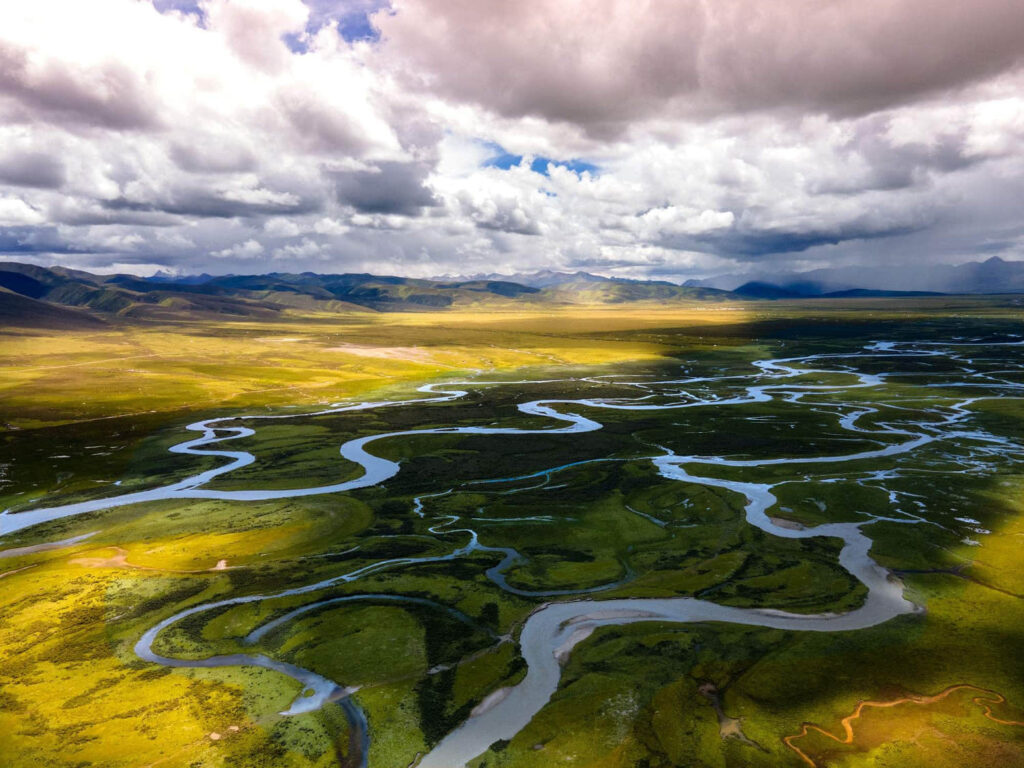
This is the starting point of the less-traveled off-road routes in Western Sichuan, the Genie South Line and the CuoYa Line. It’s the quintessential route to appreciate the natural and cultural scenery of Western Sichuan.
As for Litang itself, if you’re worried about altitude sickness, it’s best to avoid staying in Litang. After visiting Changqingchunke’er Temple and the birthplace of the Seventh Dalai Lama (his former residence) in the city, you can set off for Daocheng.
Changqingchunke’er Temple is the most famous Gelug monastery in the Kham region. But for many people, this name is a bit tongue-twisting, so it’s often referred to as “Litang Temple”.
“Changqing” and “Chunke’er” are two different nouns, the former represents the future Buddha Maitreya, and the latter expresses the meaning of Dharma wheel.
If you want to appreciate the charm of Litang Prairie, then don’t miss this temple. There aren’t many viewpoints in the city that allow such a high and distant view like this one.
Precautions: The altitude of Litang is relatively high, over 4000 meters. For most travelers, it’s easy to react to altitude sickness. You can choose to rest in Daocheng County, which is a few hundred meters lower, or Shangri-La town (altitude 2980 meters) before the Yading scenic area, to reduce the likelihood of altitude sickness.
Driving Tips: The distance from Litang County to Daocheng County is about 151 kilometers, and it takes about 2 hours and 30 minutes to drive. The whole journey takes G227, passing through Jiawa and Sandui to Daocheng County.
Shangri-La Section
This section is rich in Tibetan culture, such as Xiongdeng Temple and Bangpu Temple, as well as natural scenery like Rabbit Mountain and Haizi Mountain, and the “Pure Land of the World” Daocheng Yading, which is a magnet for travelers.
Fifth Stop: Daocheng
The city is filled with the sounds of faith.
Starting from Litang and continuing through Daocheng and Yading, this stretch of road is considered by many travelers to be one of the most beautiful scenic routes in western Sichuan.
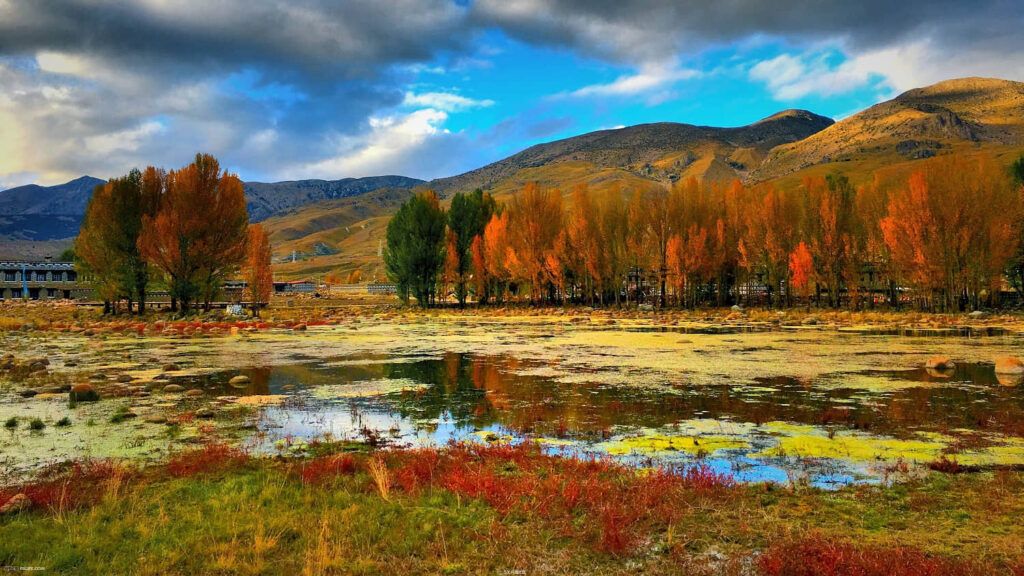
Although it’s not on the main south Sichuan-Tibet route, for many travelers who take the Sichuan-Tibet route, they often need to spend some time to make a special trip along this one.
Even more so, some would directly avoid the official G318 route between Litang and Batang, instead choosing this route to Yading, and then turning towards Batang.
Along this route, there are glaciated landscapes like Rabbit Mountain and what was once known as the world’s largest ancient glacial remnants on Haizi Mountain. There are also routes suitable for cycling and hiking from Sangdui to Daocheng. Over a distance of more than 20 kilometers, you’ll find attractions like Bangpu Temple, Black Sea, and Zhuo Jie Temple.
In the autumn season each year, Daocheng Yading becomes the most bustling time.
The autumn colors in Daocheng Yading are unmatched worldwide. Every year countless tourists flood in from all directions, especially since the airport officially opened. Many travelers no longer have to worry about long distances and can exchange a plane ticket for the most beautiful autumn colors in western Sichuan.
Yading mainly consists of three snow mountains: Xian Nai Ri, Yang Mai Yong, and Xia Nuo Duo Ji, surrounded by rivers, lakes, and alpine meadows. The landscape is layered and colorful, hailed as “the last pure land on the water-blue planet”.
Its unique topography and pristine scenery have bred a peculiarly beautiful “last pure land on the water-blue planet”, attracting countless travelers and photographers.
Entering the scenic area from Luorong cow farm, you can admire herds of cows and horses and lush grasslands. From here you can see the three sacred mountains rated among the top ten mountains by China National Geography.
The three sacred mountains all have elevations over 6000 meters. They each have distinct shapes but are interdependent along a continuous mountain range, forming a trident shape standing among the mountains.
Among those mountains in the scenic area lies Chonggu Temple, an ancient Tibetan Buddhist temple where incense has been continuously burned for more than 300 years. Stepping inside, you can feel its ancient charm.
If you still have energy, you can continue walking to see Milk Lake nestled among the mountains.
The lake is known as “the soul of Yading”. It is said that every spring when flowers bloom, the blue lake gradually turns into a milky white color that is uniquely beautiful in the rock-strewn canyon.
Besides Milk Lake, Five-Color Lake is also a popular spot. This alpine lake is characterized by its changing shades of blue from shallow to deep when the light of day varies. Surrounded by prayer flags, it adds a touch of mystique.
To the north of Yading, there is a sacred mountain, Echu Mountain. It’s like a fairy sitting alone in the clouds overlooking the surrounding valleys.
Echu Mountain is densely vegetated with forests covering various parts of the mountain. The Ramgulin area within it is the largest forest area in Daocheng.
If you visit in October, the forest below the snow line will shed its green and take on a colorful autumn dress.
Self-driving tips: The distance from Daocheng County to Garze County is approximately 539 kilometers and takes about 11 hours and 30 minutes to drive. From Daocheng, take G227 to Litang, then to Xinlong, then switch to X037 to pass Yaqing Temple and take the Ganbai line, finally reaching Garze County.
Yalong River Valley Section
This section is charming, featuring a collection of landscapes such as snow-capped mountains, forests, waterfalls, and lakes. You can enjoy the beauty of places like Zhalong Wrong, Zhuoda La Snow Mountain, and more. You’ll also experience rich cultural charm at places like Yaqing Temple and Seda Wuming Buddhist College. In the autumn, the entire route is decorated with colorful autumn leaves and grasslands, making it picturesque.
Sixth Stop: Garzê
Not very well-known but the scenery is beautiful.
From Aden to Garzê, the Aden-Litang section is a detour. If you don’t want to take the detour, but have ample time and a car in good condition with decent driving skills, you can choose to take the Genie South Line to Batang, then take the Coya Line to Garzê.
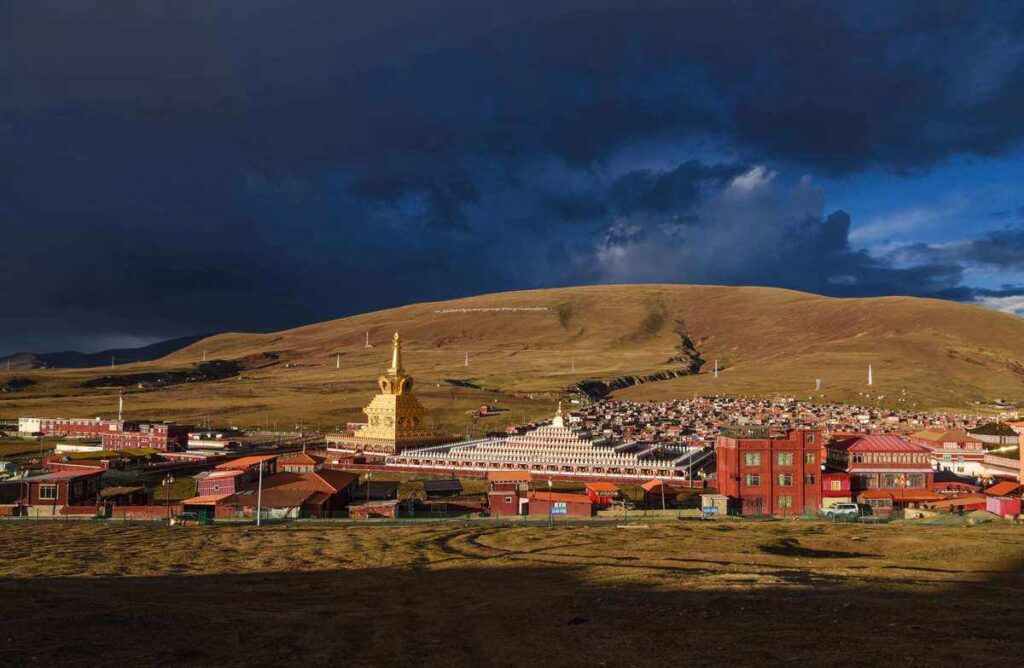
If you follow today’s route, the difficulty will decrease significantly. Between Litang and Garzê, half is a national road and half is a county road, which are relatively easier to navigate.
Starting from Xinlong and heading west, you will find the famous Yaqing Temple.
Officially named “Yaqing Wujin Zen Forest”, it is actually a relatively young temple compared to others in the Garzê Prefecture. However, under the power of belief, countless devout believers have built it into a “Yaqing City”.
It’s hard to find the appearance of a temple here; it’s more like a rather austere town.
The temple rules here are strict; smoking, drinking, and eating meat are not allowed, so most of the restaurants are vegetarian.
Moreover, because Yaqing Temple is primarily composed of nuns, male travelers need to pay special attention to their etiquette and are not allowed to enter the nuns’ living area.
After Yaqing Temple, you will be on the classic scenic route of Western Sichuan, the Ganbai Line.
Lalong Wrong, known as the first scene of Ganbai, is right beside this highway.
It’s a very beautiful plateau lake, located at an altitude of over 4200 meters and is part of Lalong Wrong National Wetland Park.
You can walk along the well-maintained lakeside plank road to get up close with this “pearl” of an ancient plateau glacier.
Here, you can see a series of glacial wonders such as ice caps and glacial gravel, as well as precious wildlife like black-necked cranes and white-lipped deer.
Zhuoda La Snow Mountain. This snow mountain is located on the border of Garzê County and serves as a landmark snow mountain for Garzê, Xinlong, and Baiyu counties. However, it is not far from Garzê County in a straight line.
Therefore, when you pass through the Zhuoda La Mountain Tunnel and arrive at Garzê County, you can still see this snow mountain with just a turn of your head.
Standing anywhere in the county, you will feel as if it is right in the city, incredibly grand and awe-inspiring. If the weather is clear and the moisture is steaming, you can even see the sunshine on the mountain above the snow line, shrouded in clouds and mist.
Self-Driving Tips: The distance from Garzê County to Seda County is approximately 149 kilometers, and the driving time is about 3 hours and 10 minutes. Depart from Garzê County and take G317 to Luoge Liangzi, turn into S455 (S454), pass through Xiayong Township, Sitongda Township, Tazixiang, and Yalong Township to arrive at Seda.
The Sanskrit Grassland Section
In this section, you can move between mountains and grasslands, and also hear the Sanskrit sounds from the temples, providing a cleansing for your soul through your sight and hearing.
Seventh Stop: Seda
The Buddhist kingdom.
The journey from Ganzi to Seda is mainly along the X6983 (S454/S455), a scenic trail of about 170KM.
Here, you can see the continuous snow-capped mountains, dense forests, meadows along the Jize River and Ni River, and some rural villages in Western Sichuan that are picturesque at every turn.
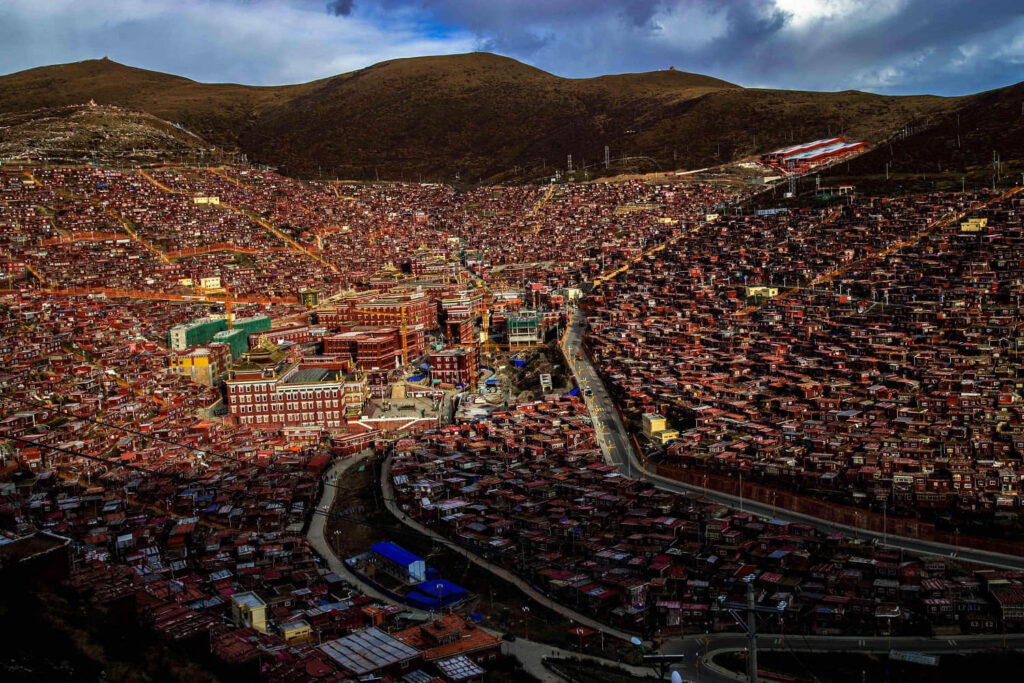
Then you will arrive at the fascinating Seda, a place where countless travelers are enchanted.
Seda is located at the southern foot of the Bayan Har Mountains, where the rolling hills lift it high like a lotus, making its elevation more than 4000 meters above sea level.
The county town may not be bustling, and the destination for travelers is not the county town, but the frequently-visited Seda Larong Wuming Buddhist Institute.
This holy place, where countless travelers and practitioners come for their admiration, is free of noisy crowds. It only has red scriptures houses, deep blue sky, and monks and nuns in deep meditation.
Driving Tips: The distance from Seda County to Barkam City is about 272 kilometers, with a driving time of about 5 hours and 40 minutes. From Seda, take G548 to Wengda via Luoruo. From there, change to G317 eastward, pass through Guanyin Bridge to reach Barkam City.
Autumn Scenery in Qionglai
This is a scenic avenue that requires careful timing. From Maerkang to Chengdu, the end of September to early November is the most beautiful time for this route. The charm of Bipenggou, Miyaluo and countless Tibetan and Qiang villages will dazzle you.
Eighth Stop: Maerkang
Jiarong’s sacred land.
Maerkang is the capital of the Aba State. It is located at the junction of Han and Tibet. Because it is closer to the Han region, it is more sinicized, and most people can speak both Jiarong language and Chinese.
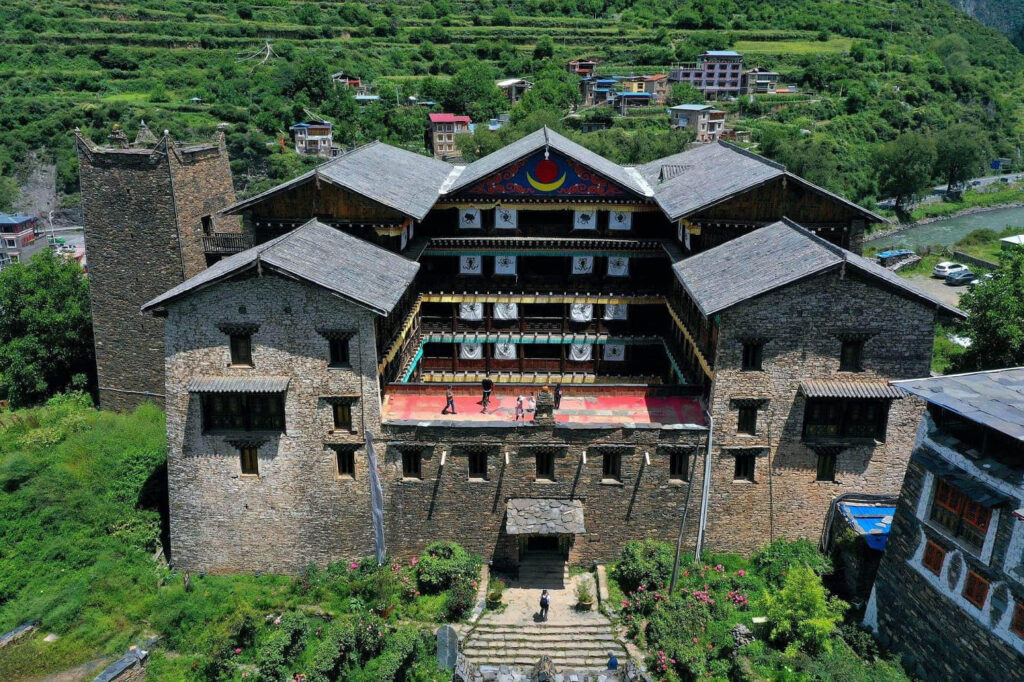
Maerkang’s Zhuokeji Chieftain Manor, is where one of the eighteen Jiarong chieftains, Zhuokeji, lived and worked. During the Long March of the Red Army, Chairman Mao and other central leaders stayed here for a week before heading north across the grassland.
Walking along both banks of the Suomo River, the scenery you see is no different from most urban landscapes. It’s just that the people dressed in Jiarong Tibetan costumes occasionally embellish the view, so you won’t be distracted.
You can stay by the river and use this as a base to search for Songgang and other chiefs’ manors and watchtowers, to delve into the culture of western Sichuan. Finally, follow the route to encounter the most beautiful autumn in western Sichuan, Miyaluo.
Road surveyors say: Nighttime is the most romantic time for Maerkang, this city inhabited by Tibetans and Qiang. The roaring Suomo River flows through the city, reflecting the city’s lights in the water, and thousands of lights illuminate the riverside walkway. The rising mist from the water is very charming.
Driving Tips: The distance from Maerkang City to Wenchuan County is about 205 kilometers, with a driving time of about 4 hours and 20 minutes. Departing from Maerkang, take the G317 all the way, pass through Zhuhai Mountain, Miyaluo, Lixian County, and arrive in Wenchuan.
Ninth Stop: Wenchuan
The rebirth of Qiang City.
Traveling east along G317 and passing through the Zhuhuai Mountain tunnel, you will encounter Miyaluo.
For travelers chasing red leaves, the red leaves of Miyaluo are a vivid flame on the land of Western Sichuan, often appearing between October and November each year.
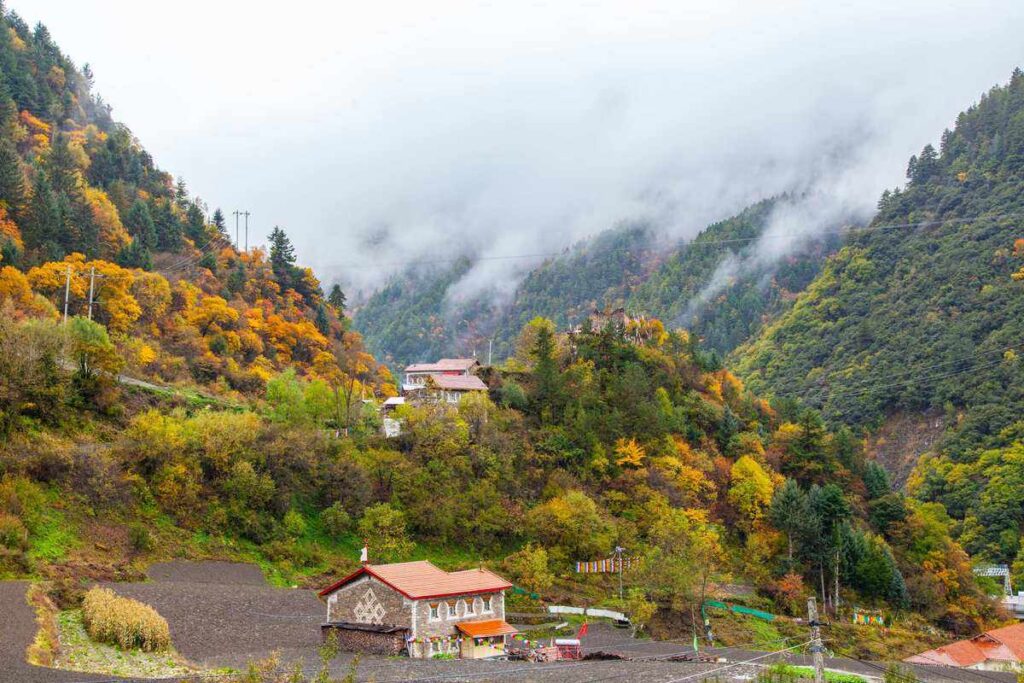
The Miyaluo Scenic Area here is known as one of the largest red leaf scenic areas discovered and opened in China, even larger than the Fragrant Hills Red Leaf Scenic Area in Beijing.
In fact, there are many red leaf areas in Western Sichuan. In addition to the designated scenic areas, there are also very lush red leaves along the highway. If you just want to admire the red leaves, there’s no need to buy tickets for the scenic area, just take highways like G317.
Continue on, and you’ll come to Lixian County.
It’s a great place to experience the beauty and danger of the Hengduan Mountain area. Outside the county town, Bipenggou, like Miyaluo, is also a great place to admire autumn red leaves.
At the same time, in Lixian County, you can also see many watchtower buildings. They are grouped in threes or fives or spread out in patches. You will also see many characteristic dwellings. Whether it’s Ganbao Tibetan village, or Taoping Qiang Village, and Mukar Qiang Village, they will continue to appear as the mileage increases.
This actually means that you’ve entered the largest Qiang territory in China, and you’ve been freely traveling in this rich Tibetan and Qiang cultural area for a long time.
If you have more time, you can visit these Tibetan villages and Qiang villages to experience the local cultural customs, and then enter the town of Wenchuan.
Driving Tips: Wenchuan County is about 165 kilometers from Chengdu City, and the driving time is about 4 hours and 30 minutes; from Wenchuan take G213, pass Yingxiu and Dujiangyan to reach Chengdu.
Conclusion
As we wrap up this incredible journey through Western Sichuan, it’s hard not to be captivated by the mesmerizing beauty that unfolds during autumn. From the vivid hues of the Hengduan Mountains to the world-class scenic corridors like Jiajin Mountain, this region offers an unparalleled experience for road trip enthusiasts.
If you’re considering a self-driving adventure, autumn in Western Sichuan should be at the top of your list. This trip not only promises awe-inspiring vistas but also a deeper connection with a region rich in culture and history.
We hope to see you on the roads of Western Sichuan soon!
